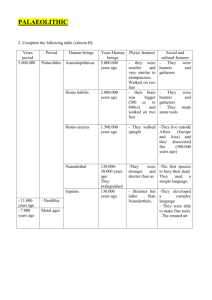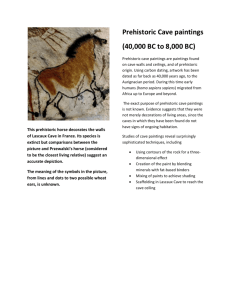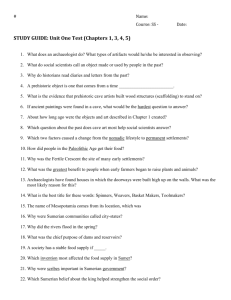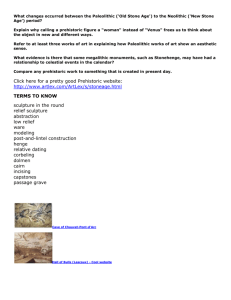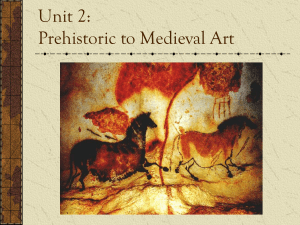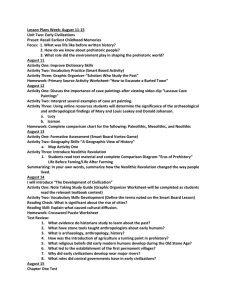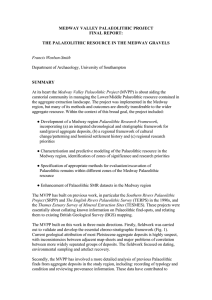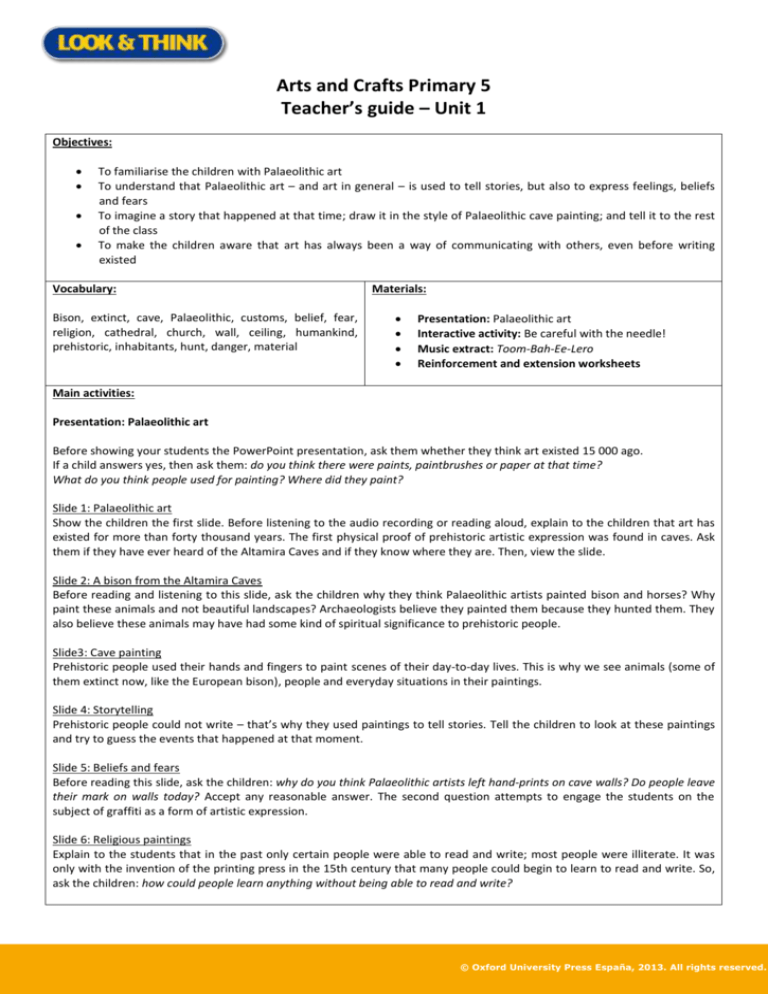
Arts and Crafts Primary 5
Teacher’s guide – Unit 1
Objectives:
To familiarise the children with Palaeolithic art
To understand that Palaeolithic art – and art in general – is used to tell stories, but also to express feelings, beliefs
and fears
To imagine a story that happened at that time; draw it in the style of Palaeolithic cave painting; and tell it to the rest
of the class
To make the children aware that art has always been a way of communicating with others, even before writing
existed
Vocabulary:
Bison, extinct, cave, Palaeolithic, customs, belief, fear,
religion, cathedral, church, wall, ceiling, humankind,
prehistoric, inhabitants, hunt, danger, material
Materials:
Presentation: Palaeolithic art
Interactive activity: Be careful with the needle!
Music extract: Toom-Bah-Ee-Lero
Reinforcement and extension worksheets
Main activities:
Presentation: Palaeolithic art
Before showing your students the PowerPoint presentation, ask them whether they think art existed 15 000 ago.
If a child answers yes, then ask them: do you think there were paints, paintbrushes or paper at that time?
What do you think people used for painting? Where did they paint?
Slide 1: Palaeolithic art
Show the children the first slide. Before listening to the audio recording or reading aloud, explain to the children that art has
existed for more than forty thousand years. The first physical proof of prehistoric artistic expression was found in caves. Ask
them if they have ever heard of the Altamira Caves and if they know where they are. Then, view the slide.
Slide 2: A bison from the Altamira Caves
Before reading and listening to this slide, ask the children why they think Palaeolithic artists painted bison and horses? Why
paint these animals and not beautiful landscapes? Archaeologists believe they painted them because they hunted them. They
also believe these animals may have had some kind of spiritual significance to prehistoric people.
Slide3: Cave painting
Prehistoric people used their hands and fingers to paint scenes of their day-to-day lives. This is why we see animals (some of
them extinct now, like the European bison), people and everyday situations in their paintings.
Slide 4: Storytelling
Prehistoric people could not write – that’s why they used paintings to tell stories. Tell the children to look at these paintings
and try to guess the events that happened at that moment.
Slide 5: Beliefs and fears
Before reading this slide, ask the children: why do you think Palaeolithic artists left hand-prints on cave walls? Do people leave
their mark on walls today? Accept any reasonable answer. The second question attempts to engage the students on the
subject of graffiti as a form of artistic expression.
Slide 6: Religious paintings
Explain to the students that in the past only certain people were able to read and write; most people were illiterate. It was
only with the invention of the printing press in the 15th century that many people could begin to learn to read and write. So,
ask the children: how could people learn anything without being able to read and write?
© Oxford University Press España, 2013. All rights reserved.
Stories and information had to be passed on orally, but this could also be done visually, through art. A good example of this is
the painting of religious scenes in churches and cathedrals. You could tell the children that the walls and ceilings of these
buildings were used as giant ‘blackboards’ or ‘storybooks’. People could view the stories of the Bible while the priests were
explaining them.
Interactive activity: Be careful with the needle!
This activity is an interactive version of the embroidered pattern drawing activity on page 5 of the Student’s Workbook.
Before you start the activity, ask the children: what are all the different shapes you see? Are they in any specific order? What
do we call this? The answer is a ‘pattern’.
Then, call a small group of children (three or four) up to the top of the class to carry out the activity. They must drag the
squares from the grid at the bottom of the slide to the larger grid in order to continue the pattern. The rest of the class should
pay close attention to what’s going on – it will be their turn soon.
Music extract: Toom-Bah-Ee-Lero
This extract of music is an example of call-and-response chanting. It is widely believed that humankind’s first form of musical
expression was purely vocal. The earliest instruments found by archaeologists were primitive stone and wooden flutes, and
animal-skin drums.
This piece of music features a repetitive drum beat and calls and responses. This song is rhythmic and easy to learn. Play the
song once and tell the children to listen closely. Ask them to describe what they hear. Ask them: how many/what instruments
can you hear? How many words do you think they are chanting? What is unusual about this song?
Later on, the teacher can play the role of the caller and the children that of the responders. The children could even drum the
beats on their desks or any some drums, if the school has some.
Closing activity:
Ask each child to get a piece of paper. Tell them that they have 15 minutes to each draw a scene from their day-to-day life. Let
them know that you will select some of these pictures when they have finished, and that the other children will have to guess
what the drawing represents. When they have all finished ask for volunteers to reveal their artwork. Put one of the pictures
up on the board, and ask the class to describe what they see in the picture, and what day-to-day action it illustrates. Do the
same with several different pictures.
Fast finishers:
They can show their stories (from the Art task
slide in the presentation) to the language
assistant, who can help them with their grammar
and pronunciation.
If there is a computer in the classroom they can
visit the suggested websites.
Language assistant:
They can help the teacher with the explanation of the
presentation, especially with the pronunciation of
difficult vocabulary, e.g. ‘Palaeolithic’.
They can help the children to think of a story for the Art
task.
If there is not enough time for all the stories to be
shown, they can ask the fast finishers to tell/show them
their stories.
© Oxford University Press España, 2013. All rights reserved.

